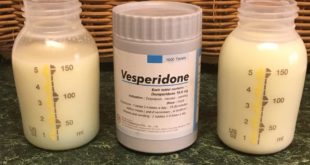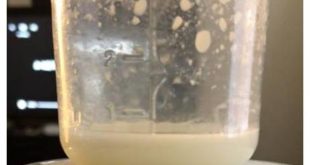 When I was pregnant with my first child in 2006, I went to a routine appointment and my doctor asked if she could see my nipples. ‘Huh?’ I thought, ‘What does that have to do with pregnancy?’ I lifted my shirt and pulled my bra across to show my right nipple to her. “Perfect gumdrop nipples,” she said. Before I could ask why she wanted to see my nipples, she explained, “I like to make sure that women have nipples that baby will recognize as something to suck on,” she said. Interesting…
When I was pregnant with my first child in 2006, I went to a routine appointment and my doctor asked if she could see my nipples. ‘Huh?’ I thought, ‘What does that have to do with pregnancy?’ I lifted my shirt and pulled my bra across to show my right nipple to her. “Perfect gumdrop nipples,” she said. Before I could ask why she wanted to see my nipples, she explained, “I like to make sure that women have nipples that baby will recognize as something to suck on,” she said. Interesting…
A couple years later, I became a postpartum doula and found that most of my clients had not had the nipple conversation with their care provider. Some, who had flat, inverted, or very large nipples, struggled with getting their baby to latch onto their breasts in the first weeks after birth. They could’ve avoided these challenges if only someone had asked, and then provided the information and tools to set them up for success.
So I started asking the nipple question: “May I please see your nipples?”
I don’t see all my clients’ nipples before they give birth. Sometimes I simply explain what nipples look like that make breastfeeding easier, and ask moms if they think they have flat, inverted or large nipples. If they do, I suggest a few things they can do to make things easier and give them contact information for lactation consultants who do home visits.
Babies can still breastfeed if you don’t have ‘perfect gumdrop nipples,’ (and even Princess Gumdrop Nipples can have challenges breastfeeding). For flat nipples, the solution may be simply doing some nipple stimulation to get them to perk up just before baby latches on. For inverted or very large nipples, you may enlist the temporary help of a nipple shield as baby gets the hang of nursing. It is best to talk with a lactation consultant in person to get advice for your particular nipple situation. As baby grows and gains strength, the shape and size of your nipples will become less of a challenge.
In the US, 60% of mothers do not breastfeed for as long as they intend to, and over 20% of new moms who start breastfeeding stop within the first 6 months (cdc.gov). Among the reasons they cite are issues with lactation and latching, concerns about infant nutrition and weight, cultural norms and/or lack of family support, unsupportive hospital practices and policies. In my decade as a postpartum doula, I have seen mothers on the brink of giving up on breastfeeding, only to discover that shifting the way their baby latches onto their breast changes everything. Why don’t we learn about this stuff in pregnancy?
As I think back on my first pregnancy, I am grateful to my doctor for the insight and foresight she had in asking me the nipple question. As a novice mom, I didn’t know to ask how my nipple shape might affect my breastfeeding experience.
So now that you know, start asking the nipple question!

Molly Rouse is an anthropologist turned postpartum doula living in Western NC with her husband and 2 children. She is on a mission to shift the world into one in which every baby is born to calm, confident, and connected parents. To this end, Molly recently launched an awesome online course for first time pregnant couples “Life Beyond Birth 101: Learn to care for your baby, recover from birth, and Become vibrant new parents”
You can find her blog at www.Nurtured Mamas and follow her on Facebook at Nurtured Mamas.
 Breastfeeding Basics
Breastfeeding Basics




